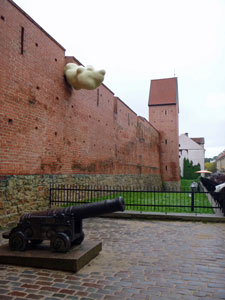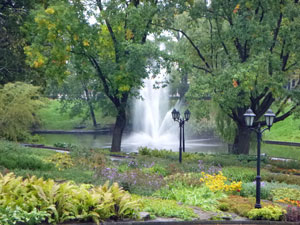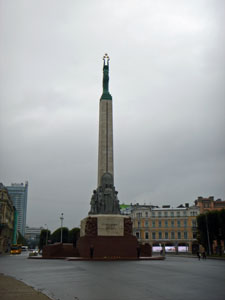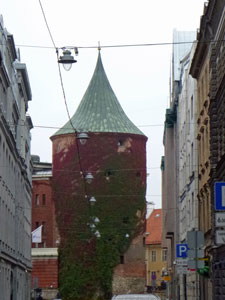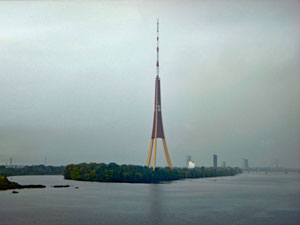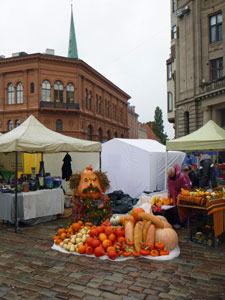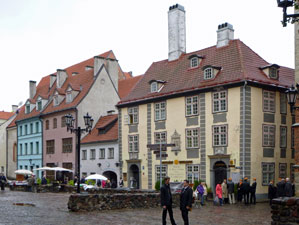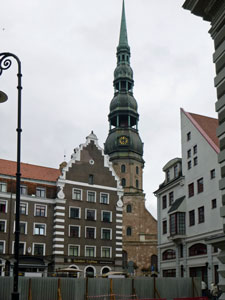| St Petersburg and the Baltics |
St Petersburg - visa free in Russia |
Russia has introduced a three-day visa-free visit to St Petersburg. The proviso is that you arrive and leave by ferry from either Helsinki, Stockholm or Tallinn and be part of an organised tour excursion. Having never been to Russia and being in Helsinki, that sounded too good to miss, but we don't like organised tours. Fortunately, the St Peter Line has found a nice workaround, where you buy a shuttle-bus ticket as the "organised tour" component. This drops you off at several points and from there you are on your own to visit the surrounding parts of the city.
|
So, early one grey morning, we found ourselves having breakfast on the "Princes Maria", as it slowly made its way through the narrow channels of the very large and crane-lined port of St Petersburg. An hour after disembarking, we had made it through the passport control and were in our mini-bus and on the way into the city. Our stop was St Isaac's Square, with its enormous Orthodox Cathedral, and from here we wandered along the Moyka Canal and on to our pleasant and quirky hotel, in an 18th century building where Rachmaninoff once lived. |
||
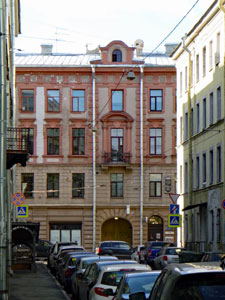 Rachmaninoff Art Hotel - quirky and comfortable |
|
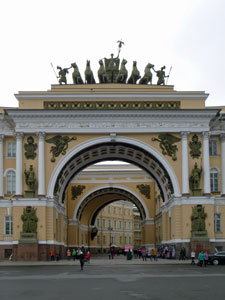 Gateway to the Palace Square |
After settling in, we got down to the business of culture - a visit to the Hermitage - which is why most foreigners probably come to St Petersburg. On passing through the huge arched gated in the long pale-tan row of The General Staff Headquarters buildings, we entered the enormous Palace Square centred by the massive Alexander Column (note all the superlatives). Ahead lay our destination - the pastel green and white baroque facade of The Winter Palace. |
|||
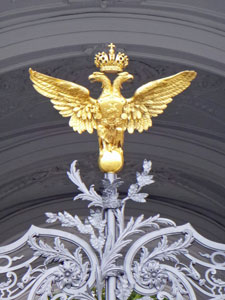 The double-headed Romanov eagle |
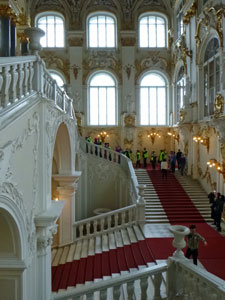 The grand stairway in the Winter Palace |
 Throne room of the Winter Palace |
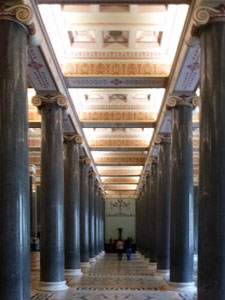 Just a small part of The Hermitage |
|
Unfortunately, on this rather bleak Sunday morning, it was also the destination of every other tourist and many locals, for, as soon as we entered the leafy courtyard beyond the golden double-headed eagle of the czars, the long stationary queues for the ticket office appeared. We smiled smugly, for I had bought our tickets on-line at the Russian Hermitage site for almost half the price charged on their English website. Despite bypassing the ticket office, it still took some time to actually get through the turnstiles, but, once inside, the complex is so large that the crowds thinned out to bearable. |
|
Thus, for the next five hours, we engaged our cultural selves, marvelling at the opulence of the Romanov czars as we wandered through glittering state rooms and staircases, before pottering from room to room in the Little, Old and New wings of The Hermitage (all interconnected with the Winter Palace). Works of the great masters, bought or pillaged, lined the walls, plus statues and objects of antiquity filling the basement. Despite, all its art, the museum maintained this huge sense of space and, tiring of the dark and busy Renaissance works, plus never having had an eye for cherubs or madonnas, or dogs and animals fighting, my eyes gradually turned upwards to discover the one part of this museum that I really liked and had me looking forward to visit the next room - the ceilings. The geometry of receding arches and cupolas, the subtlety of pastel patterns - now, for me, that was art. |
|||
 |
 The superb ceilings ..... |
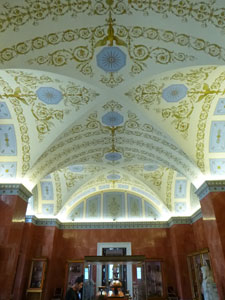 ..... of The Hermitage |
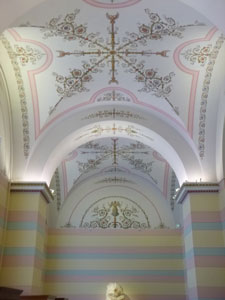 |
Legs aching (even more than after a 15km hike with full backpack) we left The Hermitage, culturally overloaded, to rest in the park by the gold-spired entry of The Admiralty and watch the St Petersburghers go by on their Sunday outings, before strolling back down Nevskiy Prospekt ( the city's main drag) to our hotel. It had been a big day. The following day the sun was out, which made it much more pleasant to wander the streets of St Petersburg, so off we set. Our first stop was the ornate Kremlinesque onion-domed Church of St Saviour on the Spilled Blood alongside the Grobyedov Canal. Ornate on the outside, it was even moreso on the inside, with wall to ceiling (including the domed ceiling itself) mosaic icons. The spilled blood refers to the church being built on the site where Tsar Alexander II was assassinated in 1881. |
|||
 Church of St Saviour on the Spilled Blood .... |
 .... with its onion-shaped domes .... |
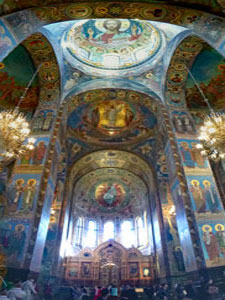 .... ornate wall and ceiling mosaics .... |
 .... and historic icons |
From there, we headed off through the Field of Mars gardens and memorial to the soldiers of the 1917-18 revolution, crossing the bridge over the wide Neva River to reach the Peter and Paul Fortress, built by Peter the Great from 1706-1740 on a small island in the river to kickstart the construction of St Petersburg. Here we spent much of the day, visiting the cathedral with its needle-like 122m golden bell-tower and the tombs of the Romanov tsars (including the family of Nicholas II, reburied there in 1998 after their murder at Yekaterinburg in 1918 by the revolutionaries). Not to miss in the fortress are the Museum of the History of St Petersburg and the Museum of Cosmonautics and Space Technology, which traces the history of the Soviet Union putting the first man into space. |
|
||
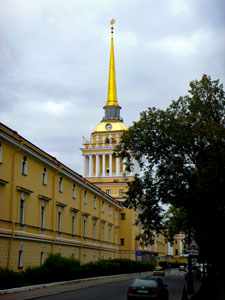 The Admiralty building |
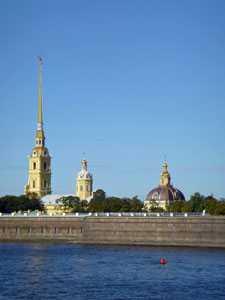 St Peter and Paul Fortress |
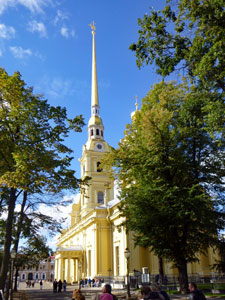 122m belltower of Peter and Paul Cathedral 122m belltower of Peter and Paul Cathedral |
 Interior of the cathedral |
|
Leaving the fortress, we strolled back over the bridges of the Neva and past the Vasilyevsky Spit with its river views. Thus ended another day, with one diversion to join in that favourite Russian pastime of queueing - the object .... a bowl of borscht at the local non-tourist restaurant near our hotel. Yum!
|
And so the last day of our "visit to former capital of glorious Russian Empire for purpose of cultural enlightenment" arrived. We had until 3pm before catching the shuttle bus back to the ferry, and we filled in most of the time in by returning to the Palace Square and wandering through the many galleries of the former General Staff Headquarters, now museum of 19th-20th century European Art and Faberge objets d'art. A quiet rest in the tranquil Michailovsky Gardens was the best way to finish our time in St Petersburg. |
|
|
 Kazan Cathedral by night |
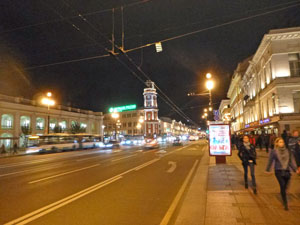 Nevskiy Prospekt by night |
|
|
|
|
As we sat in the rear lounge of the "Princess Maria" watching the thin bright line of the lights of St Petersburg growing slowly fainter in between the blackness of the Baltic Sea and sky, we agreed that it had been a detour on our grand Scando-Baltic Tour worth making. |
||








Tallinn - Estonia |
Our return to Helsinki from St Petersburg aboard the "Princess Maria" was very brief, a within two hours we were on board the "Tallink Super Star" heading to Tallinn, the capital of Estonia. The two hour crossing passed quickly, as we traversed the busy sea lane connecting St Petersburg to the rest of Europe - at one stage I counted eight ships plying along in one field of view. Disembarking at Tallin Port, we headed straight to the Old Town to check into our apartment - modern, but in a 16th century building in one of the narrow cobbled streets - a great spot from which to explore the town, which we did. |
|||
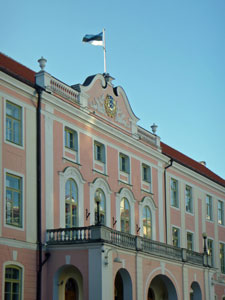 Estonian Parliament |
 View across the city from Toompea Hill |
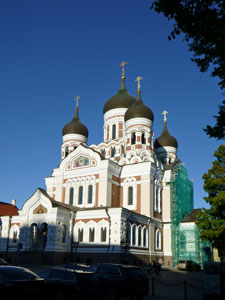 Aleksander Nevski Orthodox Cathedral |
 Fat Margaret's Tower |
Tallinn was established in the 12th century and is famed for the quality and quantity of medieval buildings in its old centre, as well as the walls and watchtowers that surround it. Thus, we spent the first sunny afternoon up on Toompea Hill, the high part of the town where the nobility once lived. From the view points you could look out over the rooves, turrets and bell-towers of the old city to the blue of the Baltic Sea beyond. You could see why the founders picked this site for a city. |
|||
 Tall Hermann Tower |
 The Maidens' Tower and Kiek de Kok |
 The walls of Tallinn |
 The street where we stayed |
Many of the watchtowers of the wall, with quaint names such as Tall Hermann, Kiek de Kock, Fat Margaret and Maidens Tower, still exist and, after visiting some of them, we passed back through a gate in the wall between Toompea Hill and the lower town. The gate was originally designed to keep the lower rabble and ghosts from entering the nobles compound, but today the tourist rabble has free passage. We walked through. |
|
The next day, we followed the walls around the lower town, past lake and gardens, and then wandered the cobbled streets to admire the many buildings from times of yore. The high point of the old city is the 122m bell-tower of St Olav's Church - for the excellent price of two euro, we climbed the narrow stone spiral staircase to get one more spectacular view over the city and surrounds - the 30cm wide viewing walkway around the tower was a big challenge to my height-o-phobia, even with its strong metal grill.
|
|
The old town is a lovely place to just wander, but, when the rain came about midday, we were glad that we had a warm and roomy apartment in which to while away the time and enjoy being part of this place, even if for the shortest of times. |
|
Estonia and Latvia in 12 hours |
To take the bus from Tallinn to Riga would have been quite quick, but probably not very exciting. Instead, we joined a min-bus load of eight people and one driver/guide to travel between the two Baltic capitals via an eclectic mix of tourist stop-overs - old castle ruins, old towns, millenia-old caves and springs, a military museum, a national park and a Russian-built bob-sled run, from whence Latvia has produced several world champions. The trip took 12 hours, during which we not only saw some interesting sights, but also got a potted history of Estonia from ancient to modern times. |
|
The first stop was the Estonian town of Viljani, with its old wooden houses and the ruins of a 13th century castle built by the The Teutonic knights, on a moated rise above Lake Viljani.
Then it was on to Helme, where further castle ruins had been built alongside a "healing well" that has been used for 4000 years and a thousand-year old tunnels dug into sandstone bedrock as a safe haven from raiders. After a lunch of perfectly-cooked duck breast and orange polenta, washed down with sea buckthorn juice, we finally said our farewells to Estonia and entered Latvia. |
|
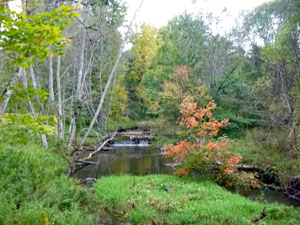 |
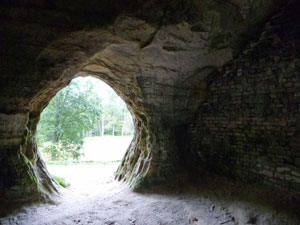 Sandstone caves at Helme, Estonia |
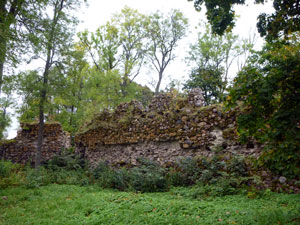 More remnants of the Teutonic Knights |
|
One of the highlights on the Latvian side of the border, were the Sietiniezis sandstone cliffs along the banks of the Gauja River - a little bit of the natural landscape of the Baltic region. The stone was so soft that solitary bees have drilled their nesting holes in the cliff walls, pock-marking the surface. The cliffs are named for these bees, but risk being renamed "Vandal cliffs" for all the idiots who have carved their names and other graffiti deeply into the rock face, spoiling large sections and even causing others to crumble.
|
|
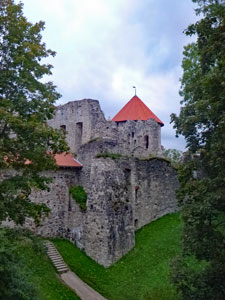 Teutonic Knights' castle at Cesis |
 The main square at Cesis |
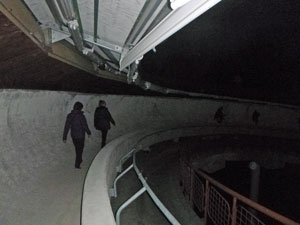 The closest we will get to an Olympic bobsled ride |
The other Latvian highlight were the remnants of the large Teutonic Knight castle at Cesis - the largest and most complete of the ruins in a lovely park setting. It may have been a lot longer, but it certainly beat a trip down the highway on the intercity bus. Thanks, Maria for being such an informative and pleasant guide. |
||
|
Riga - Latvia |
We had arrived in Riga after dark, so, apart from the party people and restaurant goers out wandering the streets we saw little other than confirmation that the city has a vibrant night life. That left just a couple of hours the next morning to see what we could before taking the midday bus south. |
|
Like Tallinn, Riga is famous for its medieval old city, though much has been restored after the heavy damage of World War II. Thus, we set off early on a rainy Saturday morning to explore the Old Riga City. It was quiet, with few people about, as we followed the cobbled streets past medieval facades, beneath the spires of 13th century churches and the step-gabled red brick town hall.
|
|
Then, heading down to the castle built by the Livonian Order in the 13th century, from where we could look over the wide reach of the Daugava River and see up river to where the 368m high Riga TV tower was hiding its top in the low cloud. Further meandering along narrow streets took us past a short restored section of the City Wall and the ivy-covered Powder Tower to the canals and flower-filled gardens on the northern perimeter of the town. |
||
|
|
|
A few more medieval buildings and church spires later, we reached the central square where the Saturday market was in full fling, despite the showers - lots of covered stalls and farm produce with some local singing and musical talent performing on a stage. It was a good place to end our improvised city tour, go back to the hotel to collect our baggage and head to the bus station. We had spent almost a fortnight being traditional tourists in the big cities and we we starting to year for the country side again. |
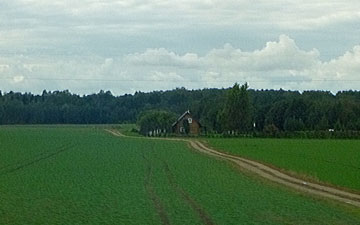 Bus window view of the Lithuanian countryside |
 Wet day on the Neman River, Lithuania |
 Church near Kaunas bus station |
Sadly, there was not enough time to visit Vilnius and complete the trio of Baltic capitals, but we did get off the bus twice to set foot on Lithuanian soil as we crossed the flat green farmlands of this country on the bus, before finally farewelling the the lands of the Teutonic Knights and entering Poland. Our grand circle of the Baltic Sea was almost complete. |
||
|


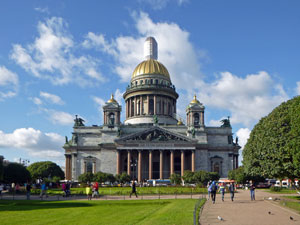
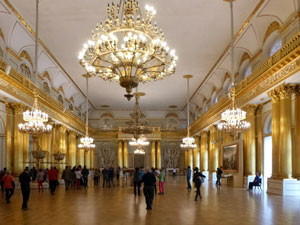
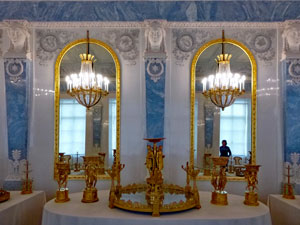

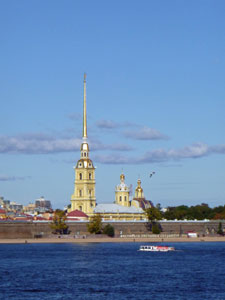

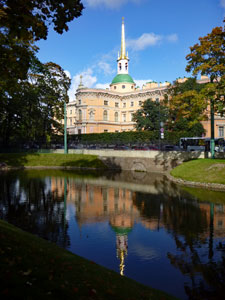
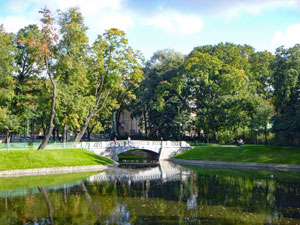
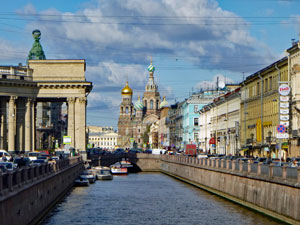

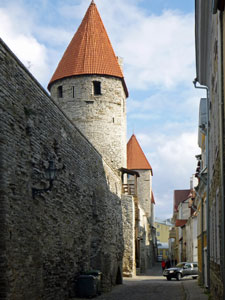
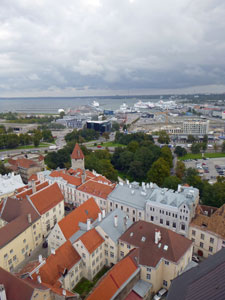
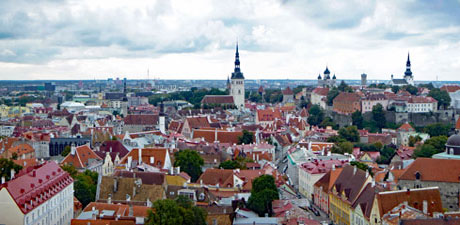
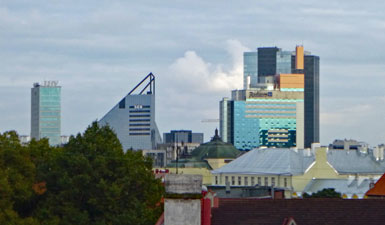
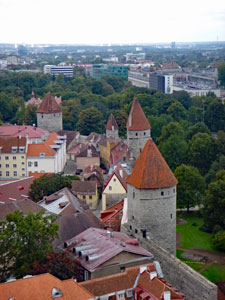


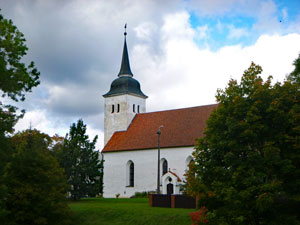
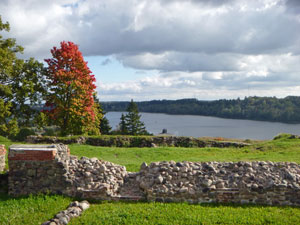
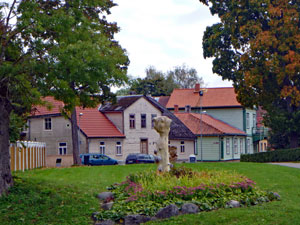
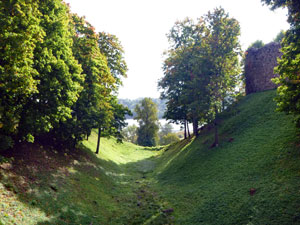

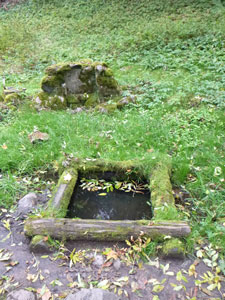


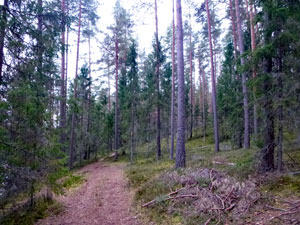
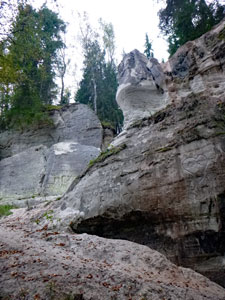


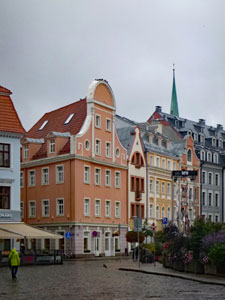
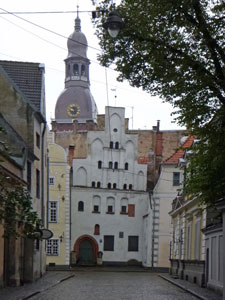


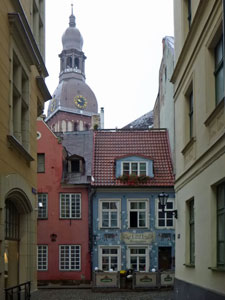
 Trokšņu - one of the narrowest streets
Trokšņu - one of the narrowest streets